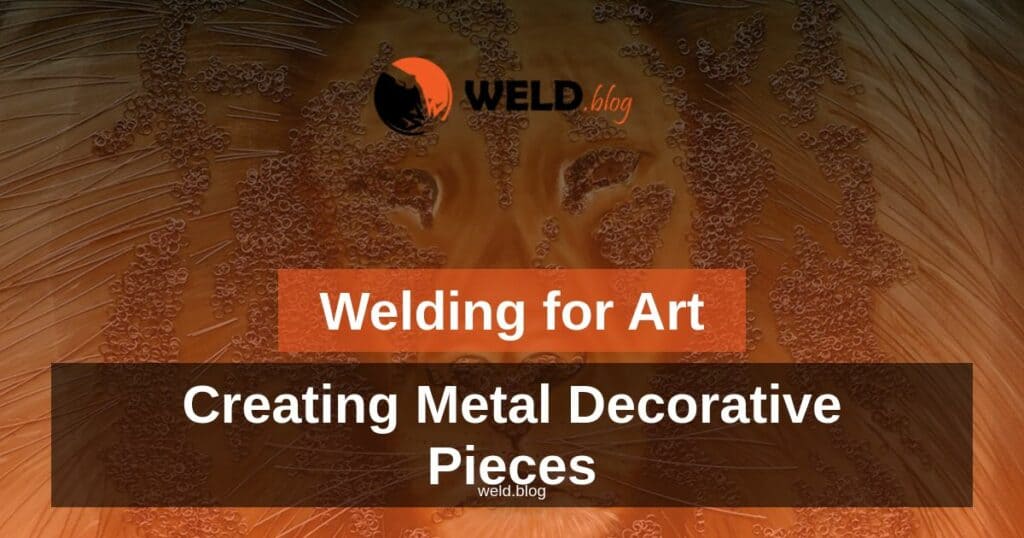Welding has been a crucial part of metalwork for centuries, and it’s not surprising that it’s also a popular technique in the world of art. The process of welding allows artists to create intricate and complex metal sculptures and decorative pieces that are both beautiful and durable. In this article, we will explore how welding is used in art and share some tips for aspiring artists looking to create their own welded pieces.
The Basics of Welding
Before we dive into the specifics of welding for art, let’s review the basics of the welding process. Welding involves melting two or more pieces of metal together to create a permanent bond. The heat source used to melt the metal can come from a variety of sources, including an electric arc, a gas flame, or a laser. The most common types of welding include MIG, TIG, stick, and flux-cored welding.
MIG Welding
MIG welding, or metal inert gas welding, uses a wire to create an arc that melts the metal. The wire is fed through a gun and the heat source also comes from the gun. MIG welding is popular for beginners and artists because it is easy to learn and produces a clean, finished look.
TIG Welding
TIG welding, or tungsten inert gas welding, uses a tungsten electrode to create an arc that melts the metal. Unlike MIG welding, the heat source is independent of the wire. TIG welding is often used when precise and intricate welding is needed. It is more difficult than MIG welding and requires more skill and practice.
Stick Welding
Stick welding, or shielded metal arc welding, uses a stick electrode to create an arc that melts the metal. The electrode is coated in a flux that creates a shielding gas to protect the molten metal from contamination. Stick welding is commonly used for outdoor projects because it can weld through dirty or rusty metal.
Flux-Cored Welding
Flux-cored welding is similar to MIG welding, but instead of using a solid wire, it uses a wire filled with flux. The flux creates a shielding gas to protect the molten metal from contamination. This type of welding is useful for welding thicker metals and can be used outdoors because it can handle windy conditions.
Welding Techniques for Art

Welding can be used to create a variety of art pieces, including sculptures, furniture, and decorative pieces. Here are some techniques to keep in mind if you’re interested in welding for art:
Brazing
Brazing is a technique that involves joining two pieces of metal using a filler metal that melts at a lower temperature than the base metal. This allows for more intricate and delicate pieces to be created without the risk of melting the metal. Brazing is often used for jewelry and other small decorative pieces.
Cutting and Shaping
Welding can also be used to cut and shape metal. Plasma cutters, for example, can be used to create intricate designs and shapes that can then be welded together to create a larger piece. A skilled welder can also use a welder to manipulate the metal, creating curves and angles that can breathe life into a piece of art.
Tips for Aspiring Welding Artists
If you’re interested in pursuing welding as an art form, here are some tips to get you started:
- Invest in quality equipment: Quality equipment can make all the difference when it comes to producing a beautiful, finished product. Don’t skimp on safety equipment either – a proper welding helmet, gloves, and clothing can help protect you from injury.
- Practice your technique: Welding is a skill that requires practice and patience. Don’t get discouraged if your first few projects don’t turn out exactly as you envisioned. Keep practicing and refining your technique.
- Be creative: Don’t be afraid to experiment with different techniques and materials. The possibilities of welding as an art form are limitless, and you never know what you might create.
Welding is a fascinating and versatile art form that has produced some truly stunning pieces. Whether you’re interested in creating sculptures, furniture, or decorative pieces, the possibilities are endless when it comes to welding for art. By mastering the basics of welding and refining your technique, you can create pieces that will be admired for generations to come.

